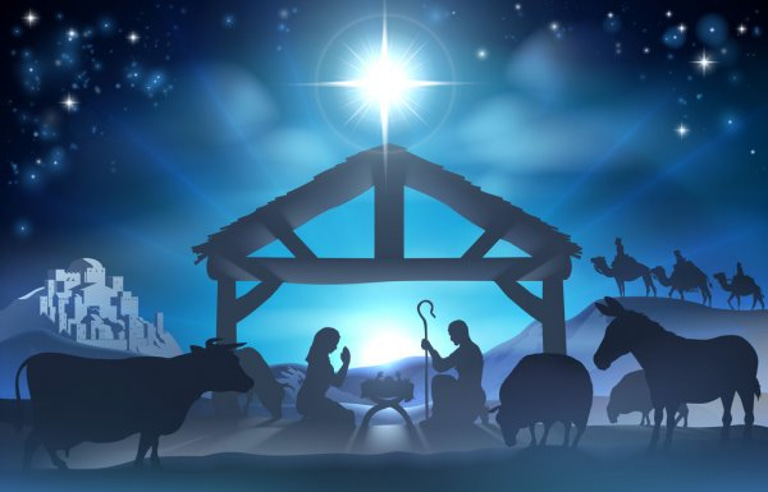Why Are Farm Animals Important in the Nativity Story?
Explore the animals of the Nativity. Learn about their origins and what they symbolize in the Christmas tale. Start your journey here!
Grace Callahan
12/10/20246 min read
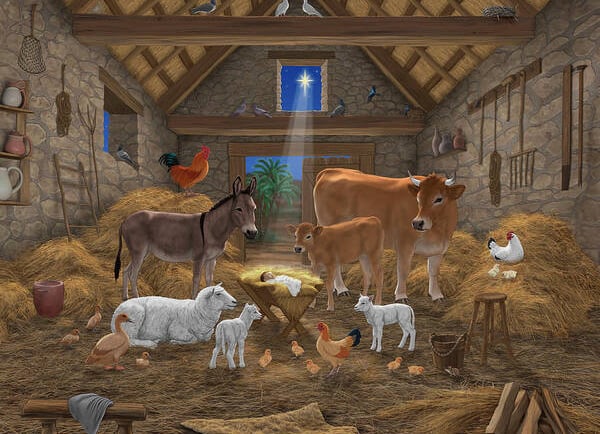

When you picture a Nativity scene, what do you see? Perhaps the serene gaze of Mary, the tender protection of Joseph, and the peaceful presence of baby Jesus in the manger. Surrounding them are the shepherds and the Magi, but don’t forget the animals. These creatures, large and small, often stand quietly in the background, yet they carry powerful symbolic and historical weight.
Did you know that most of the animals we associate with the Nativity aren’t mentioned explicitly in the Bible? Over the centuries, these animals have been imagined and included, enriching the story with layers of meaning. So, why are they there? What do they represent? Let’s explore the origins, history, and symbolism of the Nativity’s animals—both familiar and lesser-known—and discover how they bring new depth to this cherished story.
Animals in the Bible: What’s Actually Mentioned?
The Bible doesn’t give a detailed account of animals at the Nativity. Instead, it offers subtle hints. Luke’s Gospel tells us Jesus was laid in a manger—a feeding trough for animals—because there was no room in the inn. This one detail implies a setting where animals were present, even if they aren’t named.
Luke writes:
“She gave birth to her firstborn son, and wrapped him in swaddling cloths and laid him in a manger because there was no room for them in the inn” (Luke 2:7).
The word “manger” (Greek: phatnē) is key. It refers to a trough used to feed livestock, suggesting a humble, agricultural setting. Some historians believe Mary and Joseph stayed in a cave or the lower level of a family home where animals were kept. Imagine the quiet sounds of animals shifting in the straw or the faint scent of hay mixed with the chill of a winter night. This simple setting underscores the humility of Christ’s birth—a King born not in a palace, but among the animals of everyday life.
1st-Century Bethlehem: A World of Livestock
Bethlehem at the time of Jesus’ birth was a small village with a close relationship to agriculture. Families relied on animals for food, clothing, and transportation. Sheep, goats, and donkeys were especially important, as they provided milk, wool, and labor.
Archaeological digs in the region have revealed stables carved into caves, stone troughs used as mangers, and tools for animal care. Some homes had areas where animals were sheltered indoors, providing warmth during the colder months. This historical context helps us picture the Nativity setting not as a pristine, quiet scene, but as a bustling, earthy environment where animals played a central role.
The Familiar Animals of the Nativity
The Donkey: Mary’s Faithful Companion
How do you imagine Mary traveling to Bethlehem? Many of us picture her on a donkey, although the Gospels don’t mention her mode of transportation. This tradition likely arose because donkeys were common in ancient Israel, used by ordinary families for travel and labor.
The donkey symbolizes humility, patience, and peace. It reflects Jesus’ mission as a humble servant and Prince of Peace. Imagine Mary, weary from the journey yet steady in her faith, relying on this gentle creature to carry her to Bethlehem—a quiet yet powerful testament to God’s provision.
The Ox and the Manger
The ox, a staple of Nativity scenes, has its roots in prophecy. Isaiah 1:3 says:
“The ox knows its owner, and the donkey its master’s crib.”
Though not mentioned in the Gospel accounts, the ox symbolizes strength, service, and faithfulness. In early Christian art, it often appears alongside the donkey, representing the unity of Jews and Gentiles in recognizing Christ. The ox’s quiet presence at the manger invites us to reflect on the steadfast faithfulness of God, who fulfills His promises.
The Sheep and Their Shepherds
The shepherds, humble witnesses to the angelic proclamation, bring their sheep into the Nativity story. Sheep were vital to the economy of ancient Israel, providing wool, milk, and sacrifices for the Temple.
But their symbolic importance runs even deeper. Sheep are often associated with innocence, purity, and sacrifice. Jesus himself is called the “Lamb of God,” foreshadowing his role as the ultimate sacrifice for humanity’s sins. Picture the shepherds, guided by faith and wonder, bringing their flocks to the manger—a beautiful image of humility and devotion.
The Lesser-Known Animals of the Nativity
Roosters: Heralds of a New Dawn
In European traditions, particularly in France and Italy, roosters are sometimes included in Nativity scenes. Why a rooster? This bird is known for its early-morning crowing, symbolizing the dawn of a new day. In the context of the Nativity, the rooster represents the awakening brought by Christ’s birth—the light of the world shining in the darkness.
Roosters are often placed on rooftops or perched above the manger, visually announcing the Good News. They also carry a subtle connection to Peter’s denial of Jesus later in the Gospel story, reminding us of the human struggle with faith and redemption.
Dogs: Loyal Protectors
In Mexican and Latin American Nativity traditions, dogs frequently appear as companions to the shepherds. These loyal animals reflect the shepherds’ faithfulness and devotion. Historically, dogs were vital in protecting livestock, and their inclusion in the Nativity highlights their role as guardians of the Holy Family on that sacred night.
In some folklore, it’s said that dogs accompanied the shepherds to the manger, ensuring the safety of the newborn King. Their presence reminds us of the vigilant love and protection God offers to His children.
Elephants: Symbols of Majesty
In Eastern Orthodox and Ethiopian Nativity art, elephants often appear alongside the Magi. These majestic animals represent wisdom, strength, and the universality of Christ’s message. Their inclusion highlights the global reach of the Gospel, celebrating Christ’s role as the Savior of all nations.
Imagine the Magi’s caravan, adorned with rich fabrics and led by elephants, bringing treasures to honor the newborn King. This image expands our understanding of the Nativity, reminding us that Jesus’ birth was a gift for the whole world.
Birds: Messengers of Hope
In some traditions, small birds such as sparrows or doves are depicted near the manger. Birds symbolize freedom, peace, and the Holy Spirit. Their presence at the Nativity serves as a gentle reminder of the divine love and hope that Christ’s birth brings to all creation.
Animals as Symbols of Faith
Each animal in the Nativity—whether explicitly mentioned in Scripture or added through tradition—carries a deeper meaning. They remind us of humility, faithfulness, and the universal nature of Christ’s message.
Can you imagine the scene? The low rumble of an ox, the soft bleat of a lamb, the rhythmic breathing of a donkey resting after a long journey. Each sound and movement brings the story to life, connecting us to the humanity of the Holy Family and the divinity of the newborn King.
A Fresh Perspective on Your Nativity Display
As you set up your Nativity scene this year, take a moment to pause and reflect. What do the animals mean to you? The donkey’s quiet endurance, the ox’s steady strength, the sheep’s gentle innocence—all these qualities invite us to draw closer to the heart of the Christmas story.
And if your Nativity includes a rooster, a dog, or even an elephant, celebrate the richness these traditions bring. They remind us that the story of Christ’s birth is both deeply personal and wonderfully universal.
So, as you arrange your figures, let the animals remind you of God’s love for all creation. From the stable to your home, their presence speaks of humility, wonder, and the joyous promise of Emmanuel—God with us.
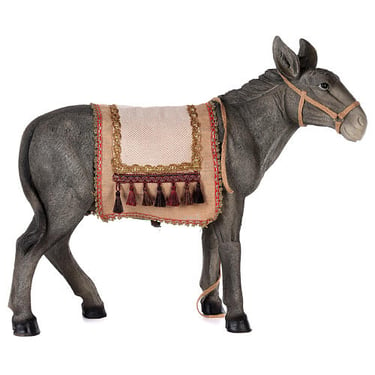

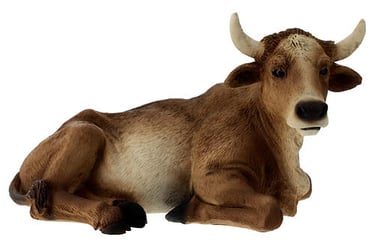

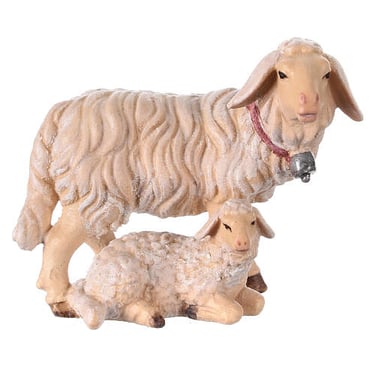

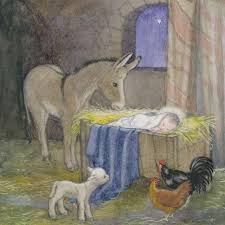

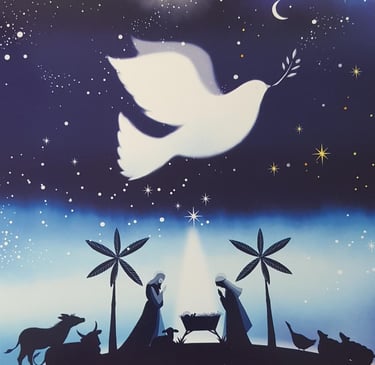

Please see my related posts
Perfecting Your Nativity Scene: Common Figure Setups
Artistic Roots of Elephant Imagery in the Nativity Scene
The Star of Bethlehem: A Beacon of Hope in the Nativity
How the First Nativity Scene Came to Life: A Rich History
Faith and Humility: Joseph's Key Contribution to the Nativity
The 3 Wise Men’s Journey: Their Mode of Travel Revealed
The Star of Bethlehem: A Heavenly Mystery Explained
